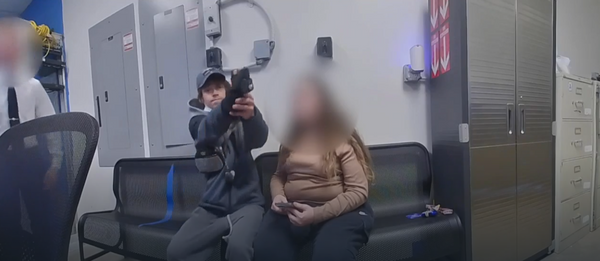
Have you ever wondered what your car’s black box is quietly storing every time you drive? You might picture these event data recorders (EDRs) only springing into action during a collision, but that’s far from the truth. These silent observers work in the background, capturing valuable insights—speed, braking, engine data—that could help you later. Whether it’s helping clear your name after an accident or giving you data to improve your driving habits, understanding what’s recorded is empowering. So buckle up and discover what’s happening beneath your dash.
Instant Replay: Pre-Crash and Crash Data
Thanks to federal standards, any car black box made since 2006 must record critical crash parameters—speed, throttle, brake usage, and more—for seconds before, during, and after an event. That means if you’re driving and slam the brakes unexpectedly, the device captures your speed, steering angle, and deceleration in a tight time window. This playback can help reveal who broke first or if your steering swerved before impact—crucial insight in disputes.
For instance, one driver’s Toyota EDR showed airbags didn’t deploy, proving the crash wasn’t as severe as claimed. In essence, your car’s black box serves as an impartial witness, replaying the moments no one else can remember.
Driving Metrics: Your Daily Behavior Logged
Many car black box systems continually record vehicle speed, acceleration, steering, and brake use—even if no crash occurs. Some ring buffer systems overwrite this data every few minutes until a triggering event—like sudden deceleration—locks the information in memory. Although this data isn’t saved permanently under normal driving, critical snapshots can remain stored.
This means if you take a sharp turn or brake hard unexpectedly, evidence of that “event” could be preserved. And trust us: insurance claims or traffic disputes quickly get clearer when these everyday metrics are involved.
Safety System Performance: How Your Car Reacted
Another savvy feature of your car black box is tracking safety systems, like airbags, seatbelts, and ABS activation. If your car deploys airbags, the EDR captures deployment time, seatbelt status, and even whether the airbag warning light was on. On high-tech models, data may also include whether advanced driver-assist systems (ADAS) like lane assist or self-braking were triggered.
This helps investigators see not just what you did, but how your vehicle responded in that moment. Such comprehensive snapshots can highlight mechanical failures—or prove that your safety features performed exactly as designed.
Legal & Insurance Value: Truth Backed by Data
When the unexpected happens, your car’s black box can be your strongest advocate in court or during an insurance claim. The data is legally recognized—recoverable by experts, law enforcement, or, with permission, by you.
For example, a 2023 Toyota driver avoided liability after the EDR data confirmed she wasn’t at fault. That same data may help insurers more accurately calculate damages and avoid unfair premium hikes. While accessing it typically requires a specialist and court consent, it’s often worth the effort for the clarity it brings.
Privacy and Ownership: Who Sees Your Driving?
You own the data your car’s black box records, but access rules vary by state. Federal privacy laws (like the 2015 Driver Privacy Act) and many state statutes ensure that EDR info stays private unless you agree or a court orders otherwise. That said, law enforcement, manufacturers, and researchers can access aggregated EDR data to improve safety.
Some skeptics worry automakers or insurers might misuse data, like tracking your daily habits or location. It pays to review your state’s laws and check your owner’s manual so you know what’s private and what’s not.
Beyond Crashes: Routine Benefits of Knowing
Understanding your car’s black box isn’t just for accidents—it can support safer, smarter driving habits. Reviewing hard-brake events or rapid acceleration records may inspire you to drive more defensively. Fleets already use EDR patterns to train drivers and reduce risky behavior. Insurance companies sometimes reward safe drivers with discounts if they consent to share data.
So, in essence, your silent dash observer can help you become a better driver, not just prove your innocence.
Real?World Example: The Marin County Crash
In April 2025, a fatal SUV crash in Marin County, CA, could only be investigated thanks to the SUV’s black box. Remote roads meant no video footage—but the EDR provided second-by-second insight into speed, controls, and seatbelt use. Authorities used this data to determine whether the driver breached provisional licensing rules. The case highlights how invaluable EDRs are, especially when other evidence is missing. Those seconds of recorded data can literally be the difference between mystery and clarity on what really happened.
Your Car’s Co-Pilot: Smart, Silent, and Powerful
Far more than crash witnesses, car black box systems are your co-pilot: tracking safety system performance, your driving patterns, and delivering hard facts when it matters most. They uphold privacy protections, but only if you’re aware of your rights—and how to assert them. Whether clearing your name after a wreck or nudging you toward safer driving habits, these devices are quietly reshaping road safety. So next time you buckle up, take comfort in knowing there’s a silent guardian under your dash.
Are you curious—or uneasy—about what your car’s black box records? Share your thoughts below: Would you want insurers to access this data? Let’s get the conversation started!
Read More
9 Practical Items Everyone Should Have In Their Glovebox
10 Items Car Thieves Are Looking for Inside the Vehicle
The post What Your Car’s Black Box Records—Even If You Don’t Crash appeared first on Clever Dude Personal Finance & Money.







